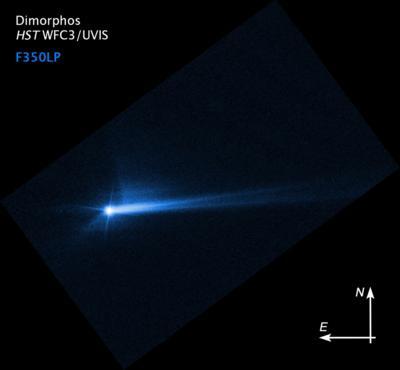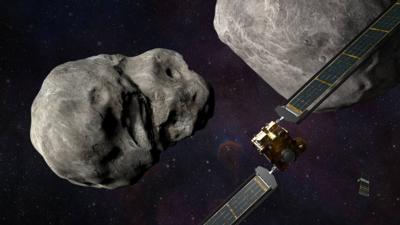Fri, Oct 14, 2022
Sci-Fi Program Proves Kinetic Alteration of Moving Bodies in Space Possible With Satellite Intervention
NASA's DART program was successful, as the administration confirmed after weeks of analysis following its Double Asteroid Redirection Test.

The program used the asteroid Dimorphos as a case study in the real-world efficacy of a kinetic impact on redirecting the path of a transitory celestial object, sending up the DART satellite on a collision course that saw it swing around the asteroid's larger sibling Didymos before impacting the target. The result? Dimorphos' orbit around the larger asteroid has been shortened by 32 minutes, shortening the 11 hour, 55-minute orbit down to 11 hours 23 minutes (with some wiggle room of 2 minutes either way).
Prior to impact, NASA established a metric for success, saying that a functional orbital period change would need to be at least 73 seconds, meaning DART went far and above the required benchmark 25 times over. The team is still tracking Didymos and Dimorphos, watching to see how the asteroids react as more time passes, in addition to the mass of ejected rock and debris that resulted from the 14,000 mph collision.

“This result is one important step toward understanding the full effect of DART’s impact with its target asteroid” said Lori Glaze, director of NASA’s Planetary Science Division at NASA Headquarters in Washington. “As new data come in each day, astronomers will be able to better assess whether, and how, a mission like DART could be used in the future to help protect Earth from a collision with an asteroid if we ever discover one headed our way.”
“DART has given us some fascinating data about both asteroid properties and the effectiveness of a kinetic impactor as a planetary defense technology,” said Nancy Chabot, the DART coordination lead from the Johns Hopkins Applied Physics Laboratory (APL) in Laurel, Maryland. “The DART team is continuing to work on this rich dataset to fully understand this first planetary defense test of asteroid deflection.”
More News
From 2023 (YouTube Version): Legacy of a Titan Robert (Bob) Anderson Hoover was a fighter pilot, test pilot, flight instructor, and air show superstar. More so, Bob Hoover was an i>[...]
Get The Latest in Aviation News NOW on Instagram Are you on Instagram yet? It's been around for a few years, quietly picking up traction mostly thanks to everybody's new obsession >[...]
Aero Linx: B-52H Stratofortress The B-52H Stratofortress is a long-range, heavy bomber that can perform a variety of missions. The bomber is capable of flying at high subsonic spee>[...]
Altimeter Setting The barometric pressure reading used to adjust a pressure altimeter for variations in existing atmospheric pressure or to the standard altimeter setting (29.92).>[...]
"Knowing that we play an active part in bettering people's lives is extremely rewarding. My team and I are very thankful for the opportunity to be here and to help in any way we ca>[...]
 Classic Aero-TV: Remembering Bob Hoover
Classic Aero-TV: Remembering Bob Hoover ANN FAQ: Follow Us On Instagram!
ANN FAQ: Follow Us On Instagram! ANN's Daily Aero-Linx (05.15.24)
ANN's Daily Aero-Linx (05.15.24) ANN's Daily Aero-Term (05.15.24):Altimeter Setting
ANN's Daily Aero-Term (05.15.24):Altimeter Setting Aero-News: Quote of the Day (05.16.24)
Aero-News: Quote of the Day (05.16.24)




